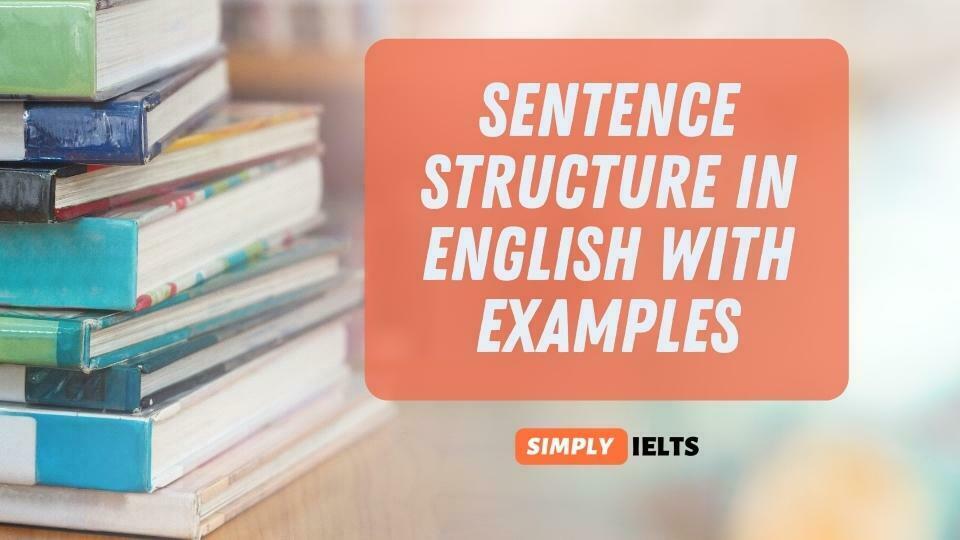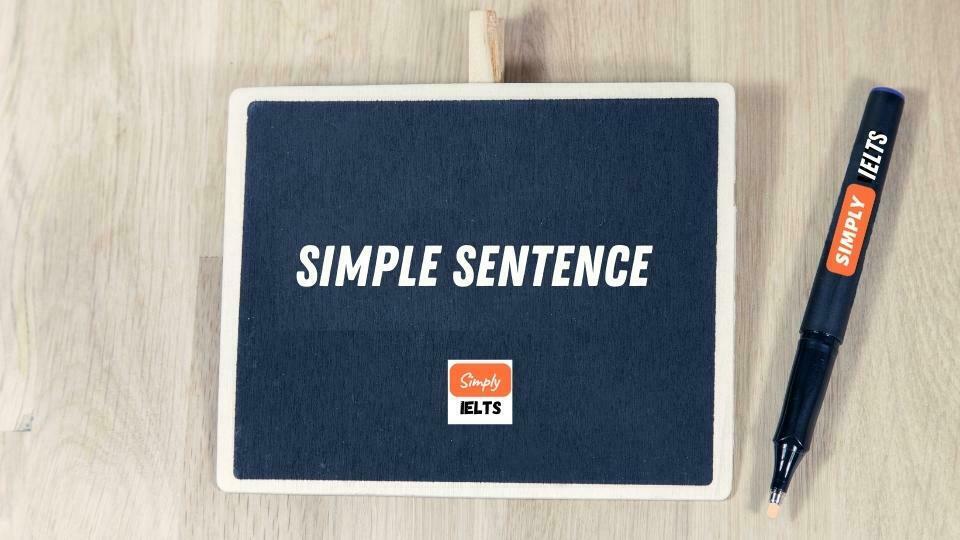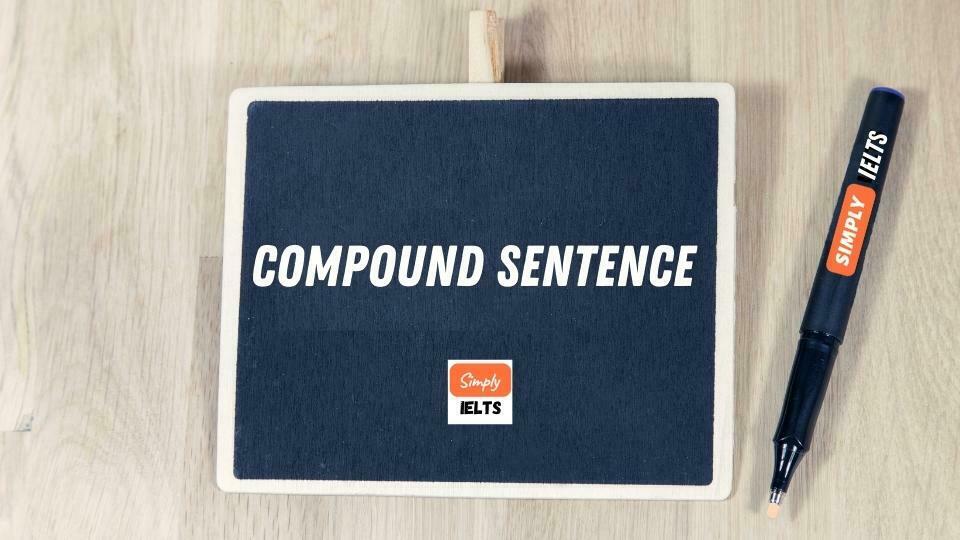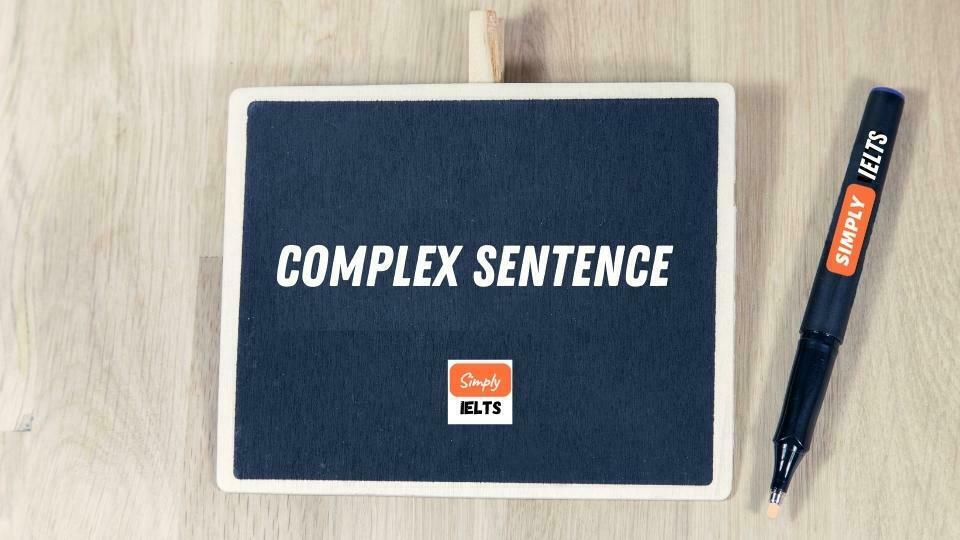As you may already know, in the IELTS Writing and speaking scoreboard, there is a criterion called “Grammatical Range and Accuracy“, which means the range you can use grammatical structures appropriately in your writing and speaking.

Today’s article will introduce one of the ways to get more GR points, through understanding and alternately using sentence structure in English such as simple sentences, compound sentences, complex sentences and complex – compound sentences with examples and exercises worksheet.
1. Composition of sentence structure in English language
In a common English sentence, there will be basic components such as:
1.1. Subject (abbreviated as S)
In an English sentence, the subject can be a noun, a noun phrase or a pronoun that refers to a person, thing or event. The subject can act as the subject performing the action (in the case of active sentences) or the subject affected by an action (for the passive sentence).
Example: My sister play badminton very well.
1.2. Verb (abbreviated as V)
In English grammar, verbs act to indicate the action or state of the subject. In general, sentence structures in English need verbs, the verbs here can be simple verbs or verb phrases.
Example: Mary eats 10 bread at once.
1.3. Object (abbreviated as O)
The object here can be a pronoun indicating a person, event or thing or a noun, a noun phrase. In English sentence structure, the object plays the role of being influenced or affected by the verb.
Example: I will buy a new book in this month.
1.4. Complement (abbreviated as C)
A common English structure also often has the appearance of a complement. The complement here can be a noun, an adjective and usually follows the object or the linking verb.
Complement has the role of modifying the object and subject in the sentence. However, in an English sentence there is not necessarily a predicate. Because this phrase will answer the question “What” or “Whom”.
Example: John bought a new car yesterday.
1.5. Adverbs (abbreviated as adv)
Adverbs are used to indicate time, frequency, place, and degree. Adverbs can be at the beginning or end of a sentence, before or after a verb to modify the verb. In some common English structures, adverbs can modify adjectives or other adverbs.
Example: Yesterday, she went to school late.
1.6. Adjective (abbreviated as adj)
Adjectives are used to describe the personality, characteristics, properties, etc. of the person, event, or thing in a sentence. Adjectives come after the verb tobe, after the linking verb or before the noun to modify that noun.
Example: Linda is a good student.
2. 9 common sentence structures commonly encountered in English
Below are the basic and common sentence structures in English.
2.1. S + V
For example:
- The boy sits.
- She talks.
2.2. S + V + O
For example:
- She likes sport.
- She pets the cat.
2.3. S + V + Adj
We often use this structure to describe.
For example:
- She looks beautiful.
- These songs sounds boring.
2.4. S + be + N
This is the structure commonly used for introductions.
For example:
- I’m a student.
- She is my sister.
2.5. S + V + adv
For example:
- She runs fast.
- The girl eats slowly.
2.6. S + Be + Adv
For example:
- Advertisement is everywhere.
- The cat is nowhere.
2.7. S + be + Adj
For example:
- I’m hungry.
- She is lovely.
2.8. V + O
This structure has been stripped of the subject, often used in imperative sentences.
For example:
- Open the door!
- Keep silents please!
2.9. V + O + Adv
For example:
- Speak slowly.
- Hold her hands tight.
3. Common sentence types in English
3.1. Simple sentence

You need to master the sentence structure in English, this will help you get more advantages
A simple sentence is a clause consisting of a subject and a verb.
Structure:
| S + V |
For example: My brother likes playing video games.
A single sentence can have more than 1 subject and 1 verb.
| 2 subjects: S + S + V | My brother and I like playing video games. |
| 2 verbs: S + V + V | My brother likes playing games and hates reading. |
| 2 subjects & 2 verbs: S + S + V + V | My brother and I like playing games and hate reading. |
3.2. Compound sentence

A compound sentence consists of more than one independent clause put together.
With this structure, the clauses are connected by Co-ordinating Conjuntions:
| F | A | N | B | O | Y | S |
| For | And | Nor | But | Or | Yet | So |
Some examples of compound sentence structure:
| SV and SV | My brothers likes playing video games, and he is very good at competitive games such as League of Legends. |
| SV but SV | My brother likes playing video games, but he doesn’t spend too much time on it. |
| SV but SV vs SV | My brother likes playing video games, but he doesn’t spend too much time on it, so he can still study properly. |
Attention:
- If the two clauses are too short, we can omit the comma. For example: She talked and I listened.
- Avoid writing too many clauses because the sentences will become tangled, and you cannot use the same word more than once to connect sentences. For example: My brother likes playing video games, and he doesn’t spend too much time on it, and he can still study properly.
3.3. Complex sentences

Using complex sentences correctly helps you score points for Grammatical Range and Accuracy
“Complex” here is in the word “complex”, because of the variety and not-so-easy in use.
That’s also why if you can use them correctly it will contribute to scoring the “Grammatical Range and Accuracy”.
A complex sentence is a sentence with an independent clause and at least one dependent clause. We will not use FANBOYS to connect these clauses but must use subordinate conjunctions such as because , although , while …) or relative pronouns (which, who…).
Some examples of complex sentences:
| If | If you eat too much sweets, you may get a toothache. |
| Although | Although I like sweets a lot, I know it’s not good to eat it everyday. |
| As soon as | As soon as they arrived, we started preparing the BBQ stove. |
| Relative clause | I know his father, who works for my sister. I remember a time when I went on a road trip with my pal, Thach. |
You can solve the following exercise to test your knowledge in sentence structure.
Simply IELTS hopes that the knowledge in the above article can help you understand the sentence structure in English and use it correctly and flexibly in your IELTS preparation.
Sentence structure in English with examples pdf
Wish you success!





I’m ready to learn English